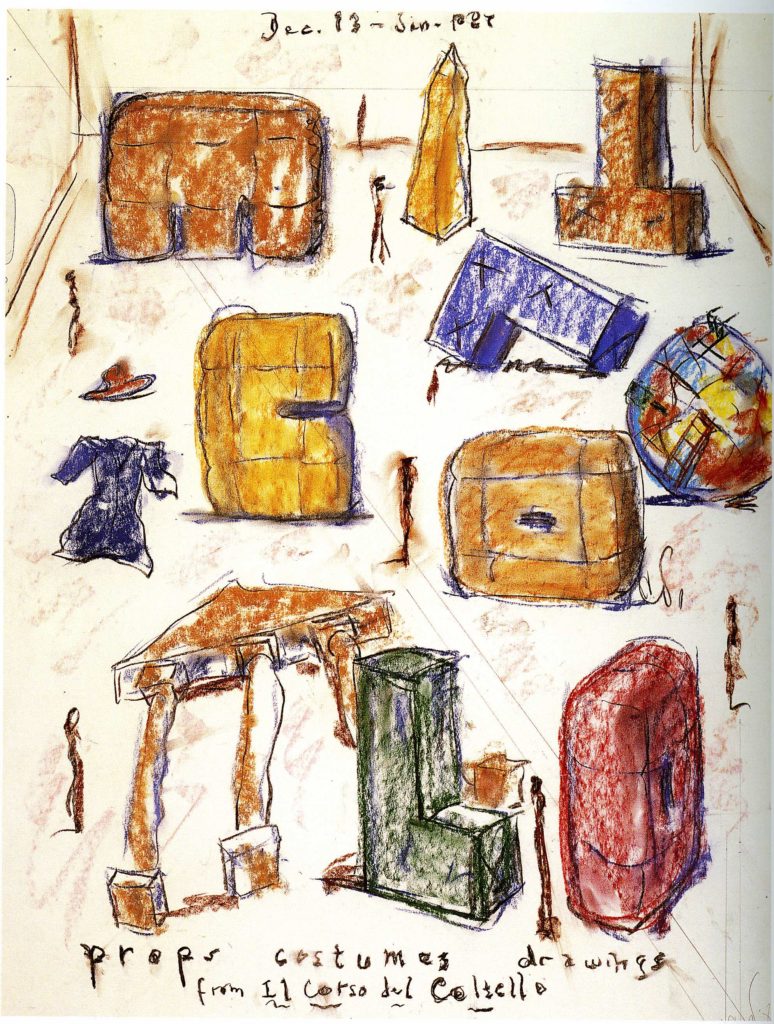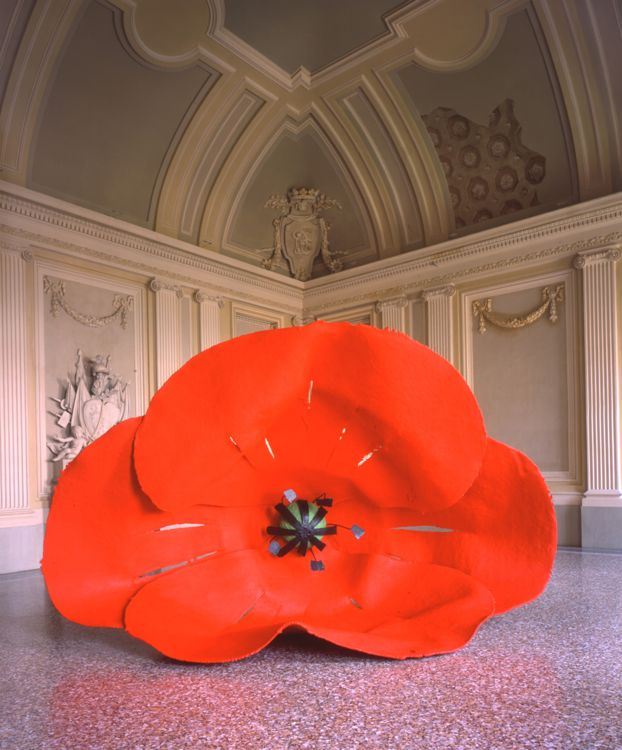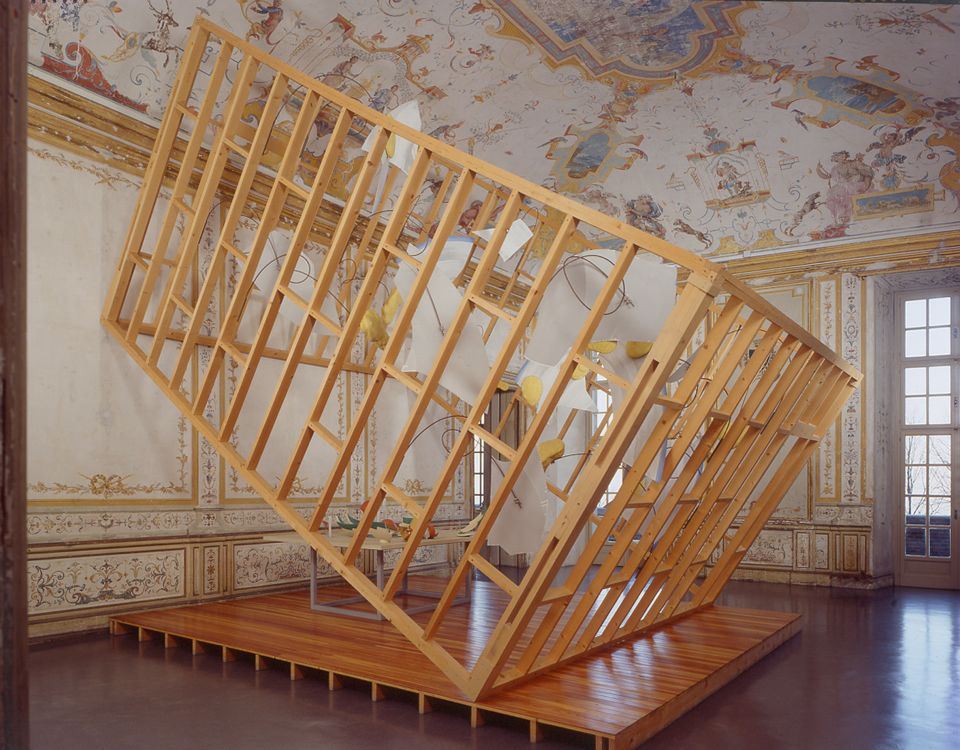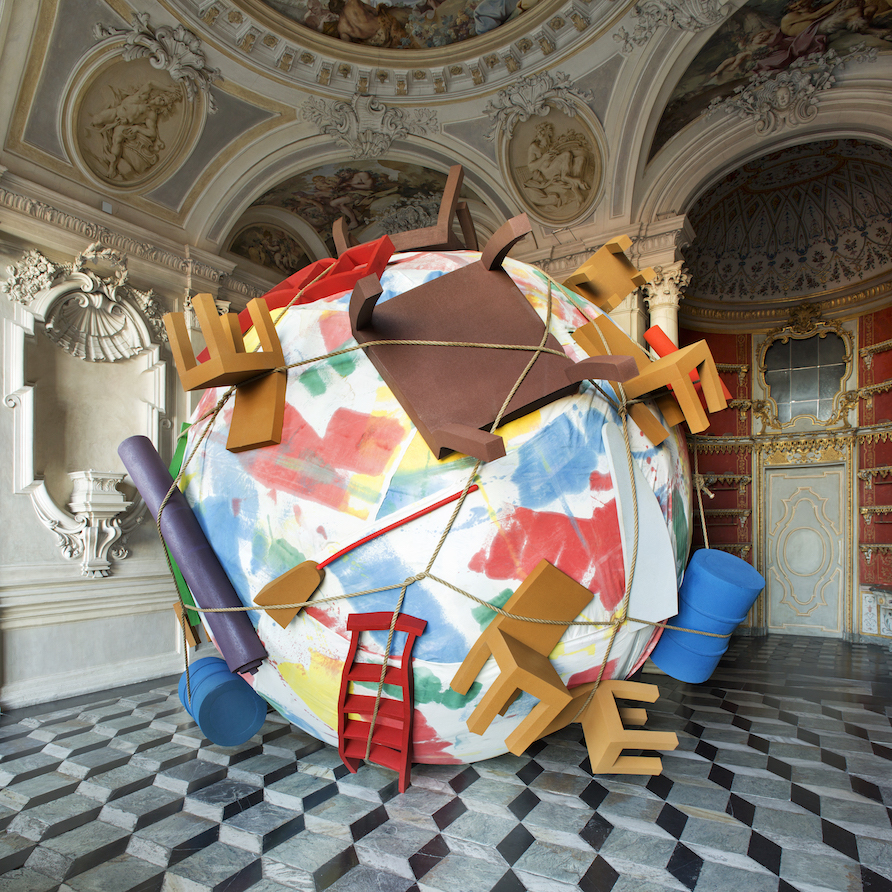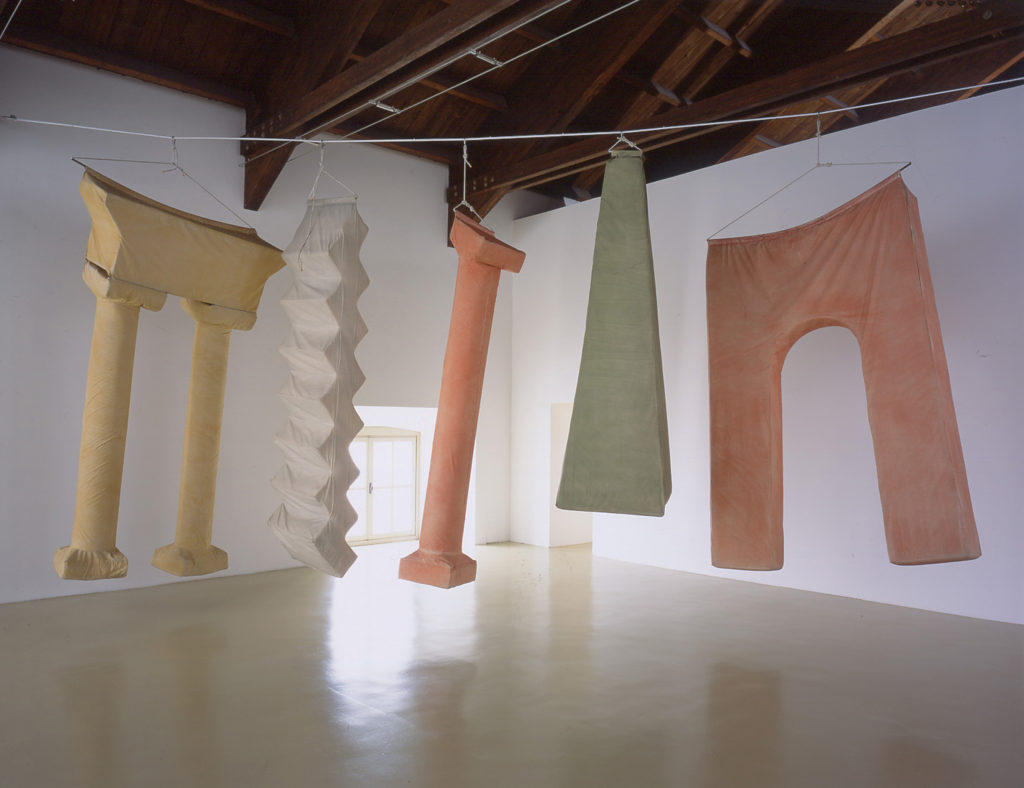Claes Oldenburg and Coosje van Bruggen
The collaboration between Claes Oldenburg and Coosje van Bruggen is based on the encounter between two strong and distinct identities. Through their dialogue, articulated in a continuous exchange of words and images, the artists have redefined the concept of collaboration. Although they have worked together since the second half of the 1970s, it was with the performance Il Corso del Coltello/The Course of the Knife that their artistic language developed into a complex dialogue involving sculpture, architecture, literature, and theater. Held in Venice in 1985, during a period when they were collaborating closely with architect Frank O. Gehry, the event emerged in relationship to the image of a Swiss army knife, chosen as a symbol of a new architectural method. In the performance, traditional architectural elements, such as arches, columns, stairways or obelisks, made as soft sculptures, were displayed as clothing hung out to dry and attached to a cable stretched between the buildings in the piazza. The Architectural Fragments, 1985, in the collection of the Castello, were created in this occasion.
Houseball, 1985, also made its first appearance within the context of the performance. It accompanied Georgia Sandbag, the character who, interpreted by Coosje van Bruggen, was inspired by George Sand and imagined as a former travel agent who had become a writer. An enormous bundle made up of pieces of household furniture created in soft foam rubber, the eponymous sculpture in the collection of the Castello is the indoor version that the artists made subsequent to the performance. A portable house, ready to use, the work transmits a sense of playful freedom, tied to the idea of a nomadic and independent spirit.
Project for the Walls of a Dining Room: Broken Plate of Scrambled Eggs, with Fabrication Model of the Dropped Bowl Fountain, 1987, takes the form of a room unmoored from its floor, as if it had been struck by an earthquake. The small domestic incidents that occur within it become a metaphor for an unexpected creative impetus. While the walls are hit by a plate of scrambled eggs, the dining table is convulsed by jets of water and by the breaking of a bowl, from which orange peels spill forth. Related to Dropped Bowl with Scattered Slices and Peels, the model was made for a large-scale project created in 1990 by Oldenburg and van Bruggen for the city of Miami, Florida. As in the case of the more than forty public art projects that the artists have produced to date, this one is characterized by a careful evaluation of the context. If the image of the bowl in pieces is, in fact, a response to the architectural complexity of the site destined to hold their work, as well as an allusion to the disparate ethnic composition of the local population, the presence of the water and the orange correspond to two elements that are characteristic of Miami.
The poetic character of everyday objects, including those no longer in use and now obsolete, is part of Oldenburg’s and van Bruggen’s research. More recently, the artists have also moved toward organic forms, as in the case of Dropped Flower, 2006. Created as a large-scale maquette, the work evokes a flower that has just been picked but apparently forgotten. It seems to be portrayed at the moment it falls to the ground, when the tension of the air still swells its petals, but the force of gravity already seems poised to take possession of its forms. To describe this microcosm of events, the artists chose a poppy, a humble flower, traditionally associated with forgetfulness. The shade of red chosen as the color of the flower petals, however, cannot easily be forgotten. In this regard, quoting Baudelaire, the artists define the work as one of “these mysterious flowers whose color enters the eye imperiously.”
[M.B.]
